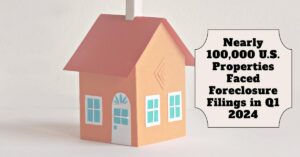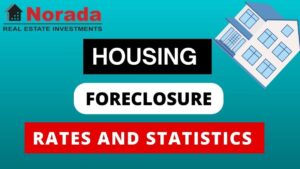The American housing market seems to be experiencing a period of nuanced change. While foreclosure activity has seen a slight increase nationwide, a recent report by real estate data provider ATTOM indicates a decline in completed foreclosures. This suggests a potential for resilience in some areas of the market.
The national average for foreclosure filings in May 2024 landed at roughly one in every 4,320 housing units. However, the situation appears significantly more challenging in several states.
New Jersey stands out with the highest foreclosure rate last month, with approximately one in every 1,939 homes receiving a foreclosure notice. This translates to more than double the national average.
The national trend points towards a worsening affordability crisis due to rising home prices, mortgage rates, property taxes, and insurance. It's possible that New Jersey is experiencing a more acute version of this crisis compared to other states.
New Jersey is a judicial foreclosure state, meaning foreclosures must go through the courts. This process is known to be lengthy, potentially leading to a backlog of foreclosures that are only now being realized.
Delaware, Connecticut, and Florida also experienced concerning rates, with filings occurring for every 2,595, 2,600, and 2,638 homes respectively.
Experts anticipate a potential worsening of the situation due to a combination of factors. The ongoing cost-of-living crisis continues to put a strain on American finances. High home prices, coupled with rising mortgage rates, property taxes, and insurance premiums, are creating a perfect storm for homeowners struggling to make ends meet.
According to Zillow, the combined effect of these factors has pushed the typical salary required for homeownership nationwide to a staggering $106,500. This represents a dramatic 61% increase from just four years ago, when the figure stood at $59,000.
Several key factors are contributing to this affordability crisis. Years of underbuilding have created a critical shortage of homes across the country. This lack of available inventory was further exacerbated by the rapid surge in mortgage rates and the rising costs of construction materials.
Beyond affordability, another significant hurdle for potential homebuyers is limited supply. This situation, detailed in a separate report by Realtor.com, reveals that available home inventory remains a staggering 34.3% lower than pre-pandemic levels.
This limited supply can be attributed in part to the “golden handcuff” effect impacting homeowners who secured record-low mortgage rates (around 3%) during the pandemic. These homeowners are reluctant to sell, further tightening supply and leaving fewer options for eager buyers.
The future trajectory of the housing market and foreclosure rates remains somewhat uncertain. Economists predict continued high mortgage rates throughout 2024, with potential decreases only after the Federal Reserve initiates rate cuts. However, a return to the ultra-low rates witnessed during the pandemic is unlikely.
Interestingly, recent economic data showing hotter-than-expected inflation has cast doubt on the possibility of a Fed rate hike in 2024. A separate Zillow survey suggests a potential silver lining. The survey indicates that most homeowners would be more likely to consider selling their properties if mortgage rates climbed above 5%.
Currently, roughly 80% of mortgage holders enjoy rates below this threshold. An increase in listings fueled by these homeowners could potentially help alleviate some of the current supply constraints.
The ongoing situation presents a complex set of challenges. While some areas, like New Jersey, face a more dire foreclosure situation, the national picture remains clouded. The interplay of factors like potential interest rate adjustments, homeowner behavior based on mortgage rates, and the overall health of the economy will all play a role in shaping the future of the housing market and foreclosure activity.
Looking ahead, uncertainty prevails. The future path of mortgage rates and Federal Reserve actions are key factors to monitor. Additionally, the behavior of homeowners with historically low mortgage rates will be crucial in determining future housing supply.
ALSO READ:




